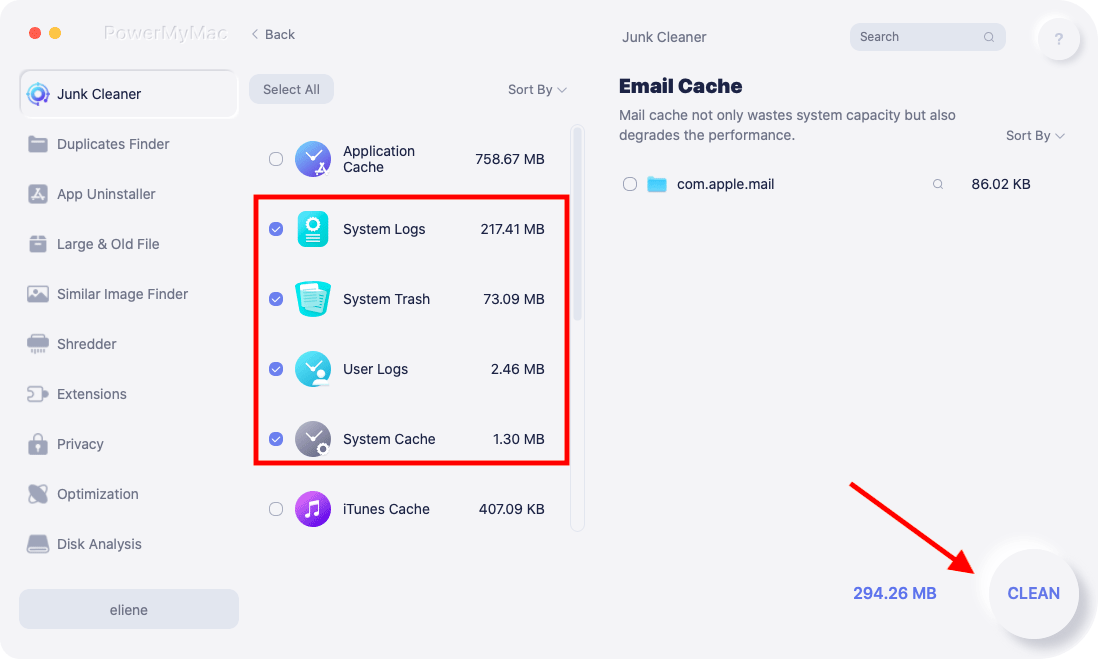Over time, your Mac probably accumulates a lot of cruft. Old applications you no longer use, data you have no use for, a desktop full of icons (only four of which you actually ever use)…you know what I mean. With so many people working from home lately, the problem has only gotten worse.
Now is as good a time as any to tidy up your Mac, freeing up storage space and probably CPU cycles and RAM in the process. Here are a few tips to make quick work of your Mac “spring cleaning.”
The built-in Storage Management app is the best place to start when cleaning up your Mac. In the Recommendations tab you’ll see a number of useful options, like Store in iCloud and Empty Trash.
- Go to the Apple menu and select About This Mac. Select the Storage tab and press Manage. In the window that appears, you can see some of the useful suggestions. 'Store in iCloud' lets you transfer all your data to cloud storage and reclaim some GBs on your Mac.
- My Mac Huge System Storage – Feb 2018. As well known, the Mac operating system usually takes up from 8GB to 13GB.So I don’t think my Mac “System” storage could be that huge, so I searched to find how it defines “System” storage for a Mac, and how to free up that storage.

Optimize Storage
Open the Storage Management app, either by using Spotlight (Command-space) or by clicking the Apple logo in the upper left of the menu bar, choosing About This Mac, clicking the Storage tab, then Manage.
In the Recommendations tab you’ll see a number of useful options, like Store in iCloud and Empty Trash Automatically. The Optimize Storage solution will get rid of things like old TV shows you’ve already watched and old email attachments when you’re low on storage space.
Take a look at your Applications and Documents
While you’re in the Storage Management app, click on the Applications tab in the left column. You can see all your installed applications here and sort them by size, easily deleting apps you haven’t used in ages.
Then, click on Documents in the left tab. There are several sections here, like Large Files and Unsupported Apps, that are worth perusing. Big library files (for apps like Lightroom or Final Cut Pro) are likely to show up here, and you might not want to mess with them. But you may have old large files and documents, or apps that no longer even work on your version of macOS, that you can safely remove.
Get your desktop under control
If your desktop is littered with icons, you should probably tidy things up a bit. Right-click (two-finger tap on a trackpad) any open space and choose Clean Up to get things arranged neatly, or Clean Up By to sort them as well. Consider the Use Stacks feature to automatically stack-up files of the same type into a single icon. Just click on that icon to open the stack. This can really tidy up your desktop!
Try DaisyDisk
Power users that really want to clean out their Mac’s storage may want to check out a third party app like DaisyDisk ($9.99). It’s a simple and clear way to see everything on your Mac, or any other attached storage device or drive. It can do things like dig into the mysterious “Other” category and help you clear out what you don’t need.
It may seem unnecessary to pay money for an app that just helps you delete stuff from your Mac’s storage, but there’s a lot of value in disk analyzers like this. It can really be eye-opening to see exactly what’s filling up your Mac’s SSD.
Some days ago, I found one Reddit user’s post telling the “System” taking up a huge space on Mac. It was the first time I met the Mac “System” storage problem. And it was described as follow:

Hi Mac Users, System is taking an incredibly large amount of space. I mistakenly loaded heavy video files to Numbers and the hard disk immediately filled up. Any help accorded will be highly appreciated.
After I checked my computer storage usage and I was surprised to find my “System” is also taking an incredibly huge space – 43GB of the total 120GB on my MacBook Air. Prototype 2 for mac.
Mac Clean Up System Storage Space
As well known, the Mac operating system usually takes up from 8GB to 13GB. So I don’t think my Mac “System” storage could be that huge, so I searched to find how it defines “System” storage for a Mac, and how to free up that storage. Free download for powerpoint for mac os.
What is in the Mac “System” Storage?
The “System” on your Mac storage bar stands for that space your macOS operating system used, including the system itself and the caches and cookies it generated while driving on your computer hard drive.
Sometimes, your Mac may mistakenly put other sections into the “System” storage. For instance, my mac made the mistake of failing to exclude the “Music creations” and “iOS files” (iOS backups) from the “System” storage, so that I get a huge “System” on the storage bar.

And after I clicked the Manage. button on the top left of the bar, it showed the real system storage was taking only 29.3 GB. And there were two new categories named “iOS files” and “Music creations” being separated.
And the sum of the storage size of these three parts (System, Music Creation, and iOS Files) is 43.38GB, equal to the size of the huge System storage I showed before on the storage bar.
Clean Up Mac System Storage
4 Tips to Quickly Clean Storage on Your Mac
Clean Up System Storage On Mac
On the storage manager page, you’ll have a detailed view of all data types with the size it used. And you can choose any large category to have a clean. And below are some usual and free methods to free up your Mac storage.
Mac Clean Up System Storage System
- Delete useless iOS backup files, applications, and documents.
- Transfer media files like photos, video, music, and iBooks to external disk drive or cloud. And then delete them.
- Empty your Trash bin get more free space.
- Remove your iPhone or iPad software updates on your Mac.
Most of these methods aim to remove the larger files on your Mac to quickly free up your Mac storage. And if there is any question, please leave your comment below.
